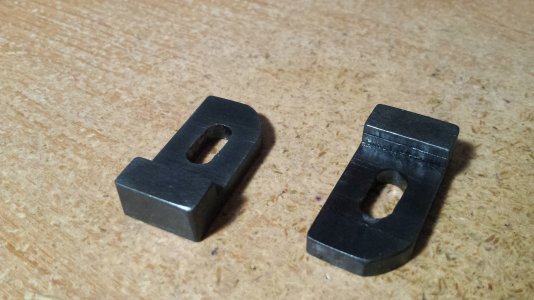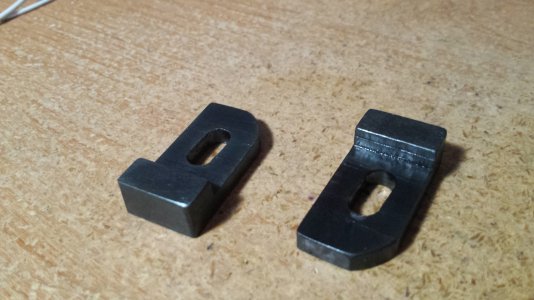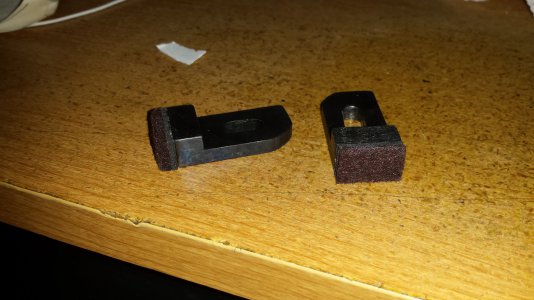Yes,the one in back is the new one. It would have been very difficult to soak the ivory parts through with oil,like the old one. Probably took years for it to penetrate like that. And,whale oil at that.
Ivory is very dense,like bone,and doesn't have the tiny pores that bone has.
The parts are of the "flyer" on very rare and expensive types of spinning wheels used as ladies training by the wealthy in the 18th. c. All females were expected to know how to spin. Even Queen Elizabeth the First. Even though they probably never did spinning beyond the learning stage,it was considered a normal p;art of their education. Curiously,men did the weaving. Spun threads were saved up and taken to weavers to be made into cloth by professionals. Probably looms were too large,and possibly too expensive for most houses.
These wheels were quite unlike the normal variety you have seen. They had mahogany frames with inlaid bandings. Their wheels were small(about 12" dia.),made of pewter or brass. They had level winding mechanisms made of brass,not unlike the bobbin winding mechanisms of later sewing machines,with heart shaped cams. Only the wealthy could afford them.
I like getting to
make missing parts for them,as the only way to get parts is to make them.
Ageing ivory properly is a bit of a learning curve. First of all,old ivory in these wheels is invariably coated with a very fine layer of soot,which has gotten embedded in the surface over hundreds of years. It's very fine,but it's there. I have worked out ways to add this layer and stain the ivory just the right color.
Houses were heated with wood,or especially with coal,causing the fine layer of soot which permeated everything more or less.
There is a left hand thread inside the "pulley". I make taps that also have the correct form of early threads,and are left handed. Usually,these taps get used only once since I make them to match parts I'm given to copy. The early threads often resemble light bulb threads(knuckle threads) in miniature. Sometimes threads are more like 90 degree V threads,rather than the deeper cut 60º threads we have today.




